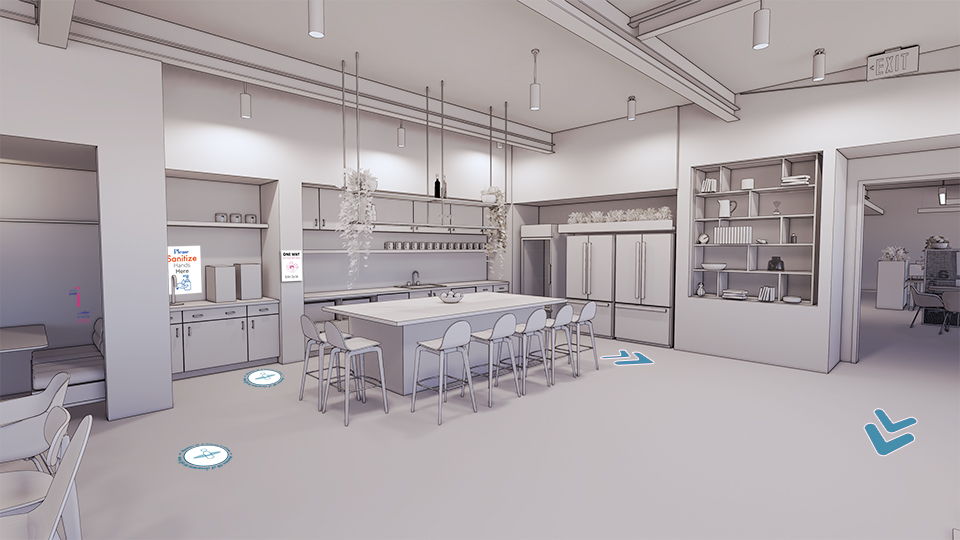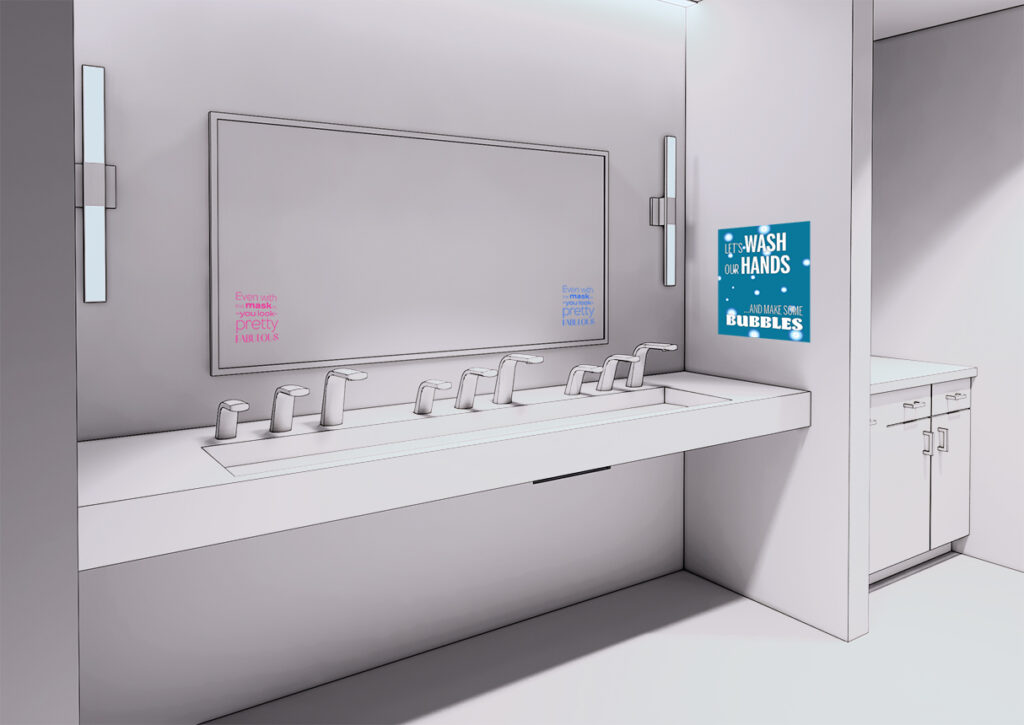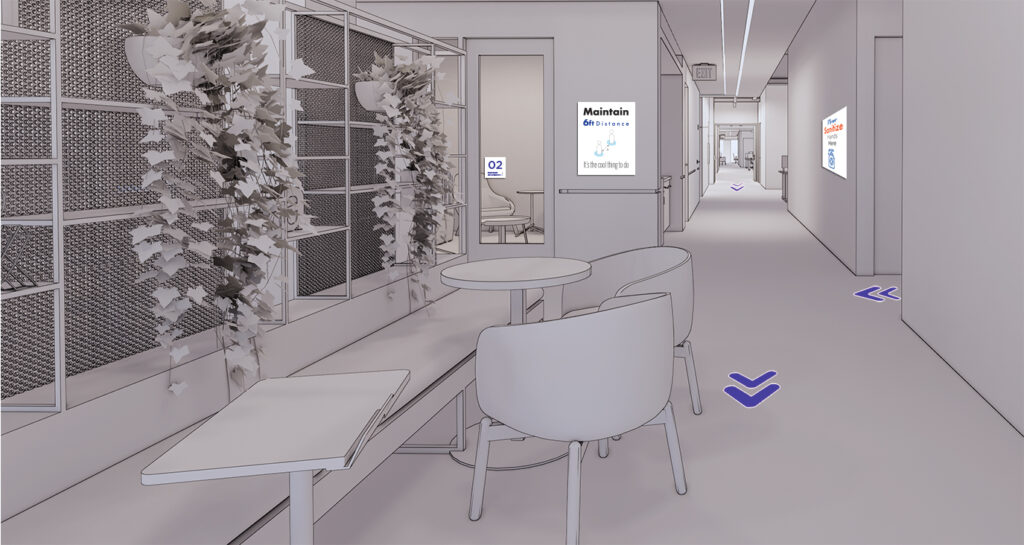This is an article I wrote while working for AP+I Design, as the Director of Environmental Graphic Design. Originally posted to LinkedIn on June 12, 2020.
90-some days into quarantine, most of us have taken our places in some version of the remote workforce. For some, this was unfamiliar territory, while others were already grizzled veterans of the WFH game. But, by now, we have mastered the art of virtual meetings, virtual collaboration spaces and virtual happy hours. We’ve settled into our home offices, and the once-invasive discomfort of wearing a mask outside the home has been replaced with a level of acceptance of this and other new norms. But what happens when we leave our finely tuned home offices and head back to the workplace?
At AP+I Design, we’ve spent the last 2 months considering what the role of interior architecture and environmental graphic design (EGD) will play in a post-COVID world, both short and long-term. We asked ourselves and our clients what would be necessary to put teams, employees and clientele at ease as we transition back to the workplace. These collaborations have led to the development of a comprehensive workplace strategy guide that touches on the logistics of working together safely and softer issues such as company culture, employee wellbeing and productivity.
To be sure, the strategy shouldn’t be about bringing things back to way they were because we know things will never be the same.
We quickly realized that, in the short term, EGD will be vital as we welcome people back into offices. To assist our clients in this effort our EGD studio created a Post-COVID Workplace Graphics Program, a robust system of graphics that are easily deployed and communicate a range of message types to your audience across multiple touch points. We believe the thoughtful application of well-designed wayfinding and graphics can convey valuable information while instilling confidence and reassuring employees of their company’s commitment to their health and safety. To be effective, a graphic system or sign program will also need to:
1. Be a scalable kit of parts
Every workplace has different messaging needs. As we gain new health and safety information over the coming months, your graphic system should have the ability to scale and grow as needs those change. If your client has digital signage, leverage that infrastructure to deploy a digital version.
2. Be easy to install, maintain and replenish
If a sign program’s coordination and maintenance is not easy, it won’t get used. By partnering with fabricators, AP+I has developed a simple ordering and replenishment process. The result is a system that is as easy to work with as it is to understand.
3. Be Inclusive: Include iconography, symbology, multi-lingual messaging and considerations for visually impaired persons
Icons and symbols are universal, easy to read and legible from a distance. Leverage them as much as possible. To make sure your message reaches everyone, consider translations in several languages. Also consider ADA design best practices regarding visual contrast and character height when developing graphics.

4. Be aesthetically pleasing to ensure longevity
Since you and your employees will be seeing with these graphics for the next year or more, make them look and feel intentional and with a degree of permanence. Select durable, cleanable materials to withstand typical wear and tear.
5. Create moments of humor and celebrate “being human together”
Included in our program are the requisite warnings for handwashing and mask-wearing, as well as queueing and directional graphics. Also included are a series of graphics meant to be more playful than standard off-the-shelf sign programs. They are meant to create small, light-hearted moments as workers navigate the restriction-laden gauntlet of the post-COVID workplace. In restrooms, we place reminders on glass and mirrors of how fabulous one can look in a mask. In elevators, riders can compare whose corner is “cozier”. And, in cafés and break areas, workers are reminded to observe new circulation routes.

6. Promote your unique workplace culture
Because many aspects of the office cannot return to what they were—having meals together, sharing stories over coffee, collaborating closely—it is ever more important to encourage and maintain what makes your office special: its culture. Use graphics on floors, walls and even ceilings to show how people can come together while maintaining a safe distance. Mark spots on communal tables where people can sit and talk to their colleagues with enough room. Most importantly, use your Brand’s tone and voice in messaging to create familiarity and consistency.
In the end, a successful graphics program, both short-term and long-term, is one that is flexible enough to communicate the ever-changing nature of our situation in a timely and reassuring way.
It should acknowledge the severity of the pandemic but also pay tribute to the resilience of Humanity. It should caution against future adversities and celebrate recent wins. To be sure, the strategy shouldn’t be about bringing things back to way they were because we know things will never be the same. Instead, it should be about creating a level of comfort and familiarity—injected with a little bit of light-heartedness—in the new reality we face together.

